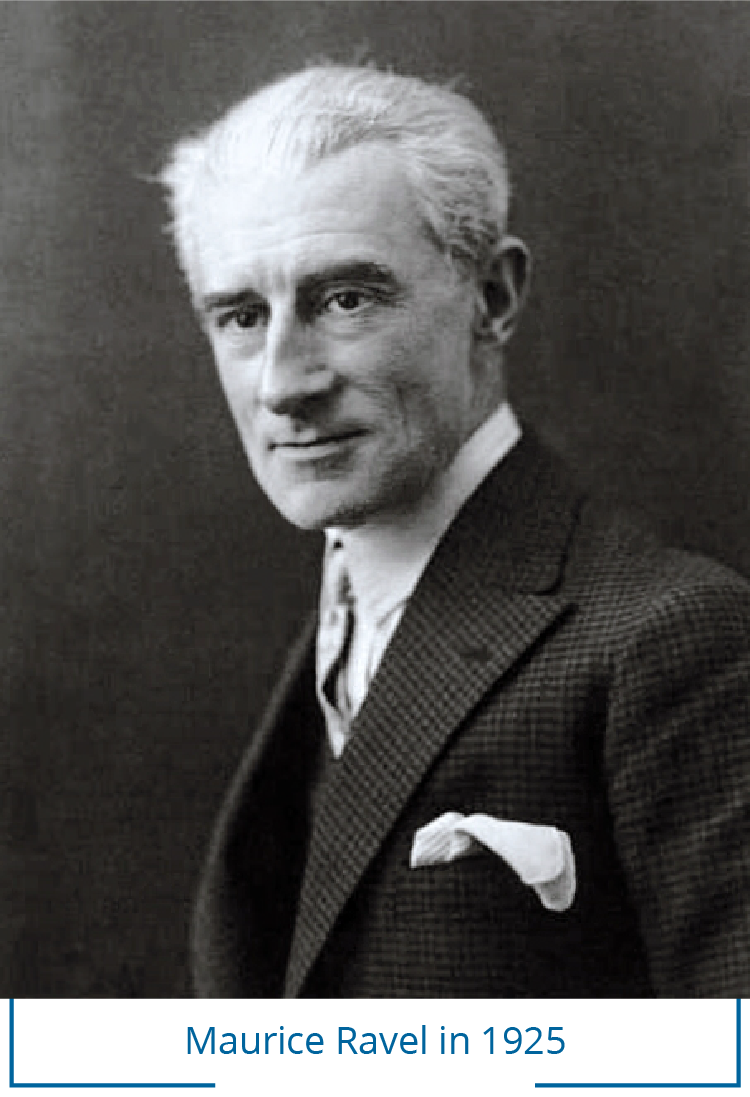VIOLIN SONATA NO. 2, in G MAJOR
Maurice Ravel
b. Ciboure, France, March 7, 1875; d. Paris, December 28, 1937)
Composed 1923-7; 18 minutes
 Ravel’s Blues is the centerpiece of his Second Violin Sonata. In it, the violin frequently echoes the wailing saxophone, and both instruments recreate the sounds of the strummed banjo. One critic has even found echoes and borrowings from Jelly Roll Morton’s Black Bottom Stomp. Ravel admitted to having been impressed by the “nerve-wracking virtuosity” of the African American jazz musicians in 1920s Paris. Nevertheless, he insisted that the spirit of the music is Gallic to the core. “It is French music – Ravel’s music – that I have written,” he told a reporter while touring the piece in the United States and Canada.
Ravel’s Blues is the centerpiece of his Second Violin Sonata. In it, the violin frequently echoes the wailing saxophone, and both instruments recreate the sounds of the strummed banjo. One critic has even found echoes and borrowings from Jelly Roll Morton’s Black Bottom Stomp. Ravel admitted to having been impressed by the “nerve-wracking virtuosity” of the African American jazz musicians in 1920s Paris. Nevertheless, he insisted that the spirit of the music is Gallic to the core. “It is French music – Ravel’s music – that I have written,” he told a reporter while touring the piece in the United States and Canada.
The Violin Sonata is his final chamber work. Ravel joked that it took him four years (1923-27) to get rid of all the unnecessary notes. “In writing my Sonata, two fundamentally incompatible instruments, I assumed the task. . . of emphasizing their irreconcilability,” he said. Still, like Debussy 20 years earlier, Ravel must have sensed deep down that opposites can attract. The opening Allegretto main theme is graceful and lyrical when heard on violin, more angular on the piano. It is contrasted with a persistent quirky ’tapping’ figure which assumes more importance as this pastoral opening movement progresses. The musical material is shared between the instruments equally and fluently, with never an extraneous note. After the Blues movement, the finale is a driving perpetuum mobile, led by the violin, with simple piano accompaniment. It brings back themes from the two earlier movements. The demanding violin writing is reminiscent of Ravel’s virtuoso violin showpiece Tzigane, which he also wrote while this sonata was being composed.